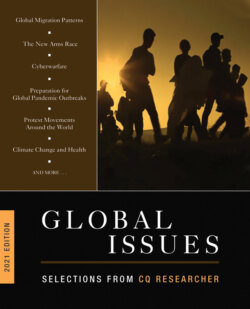Читать книгу Global Issues 2021 Edition - Группа авторов - Страница 79
Arms Control Treaties
ОглавлениеShaken by the missile crisis, Washington and Moscow agreed the following year to establish a communications hotline between their leaders to mitigate the risk of accidental nuclear warfare. The two countries also signed the Limited Test Ban Treaty, which forbade most nuclear test explosions.41
Another major arms control effort occurred in 1968 with the signing of the U.N.-sponsored Nuclear Non-Proliferation Treaty. It recognized the five existing nuclear-weapons states—the United States, the Soviet Union, Britain, France and China—and required their pledge to work toward nuclear disarmament. The treaty also obligated non-nuclear states not to acquire nuclear weapons but guaranteed them the right to civilian nuclear power, subject to certain safeguards. Eventually, 187 countries signed on, making the treaty one of the pillars of a global arms control architecture. (Israel, India and Pakistan refused to sign and later became nuclear weapons states. Cuba and South Sudan have refused to join the treaty but do not have nuclear weapons.)42
In 1972, President Richard M. Nixon, long an anti-communist hawk, traveled to China, fostering a rapprochement that upended the balance of power between Washington and Moscow. Worried about a new Sino-American alliance, Moscow quickly reached two major arms control agreements with Washington that same year.
The first, the Strategic Arms Limitation Treaty, or SALT I, froze the number of each country’s long-range ballistic missile launchers and submarine-launched ballistic missiles at existing levels. The second accord, the Anti-Ballistic Missile (ABM) Treaty restricted the number of anti-missile batteries each side could deploy.43
